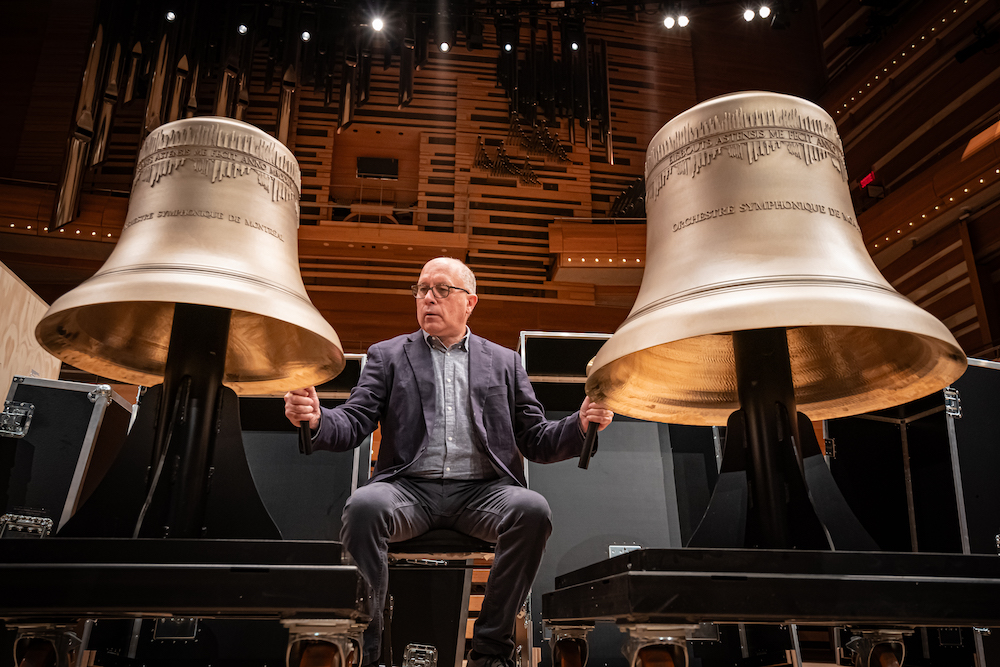Dutch bells take centre stage in orchestras worldwide
Clare Varney
The Dutch may be known for exporting tulips and cheese, but they can be equally proud of another, little known export – bells.
The recent visit to Amsterdam by the Orchestre Symphonique de Montréal shone a light on a small town near Eindhoven, which is home to the Eijsbouts bell foundry. Asten is the centre of the bell-making world and the location of the National Carillon Museum.
Eijsbouts’ huge carillon bells can be found high in the slopes of Mount Fuji in Japan and dotted across Canada, in carillon towers, recognising the Canadian army’s role in the liberation of the Netherlands at the end of World War II.
Eijsbouts even provided the bell for the opening ceremony of the 2012 London Olympics. But they also produce smaller orchestral bells which can be found in many of the finest concert halls.
A set of Eijsbouts bells were in Amsterdam last month with the Orchestre Symphonique de Montréal during a stop on their 2024 European tour. Two bells from the foundry in Asten had returned to the Netherlands to take centre-stage at the Concertgebouw in a performance of Berlioz’s Symphonie Fantastique.
Many years ago, the OSM decided to replace their tubular bells, which they had used since the orchestra’s inception in 1934. Who should they turn to for help?
The orchestra was attracted by the “excellence of the Dutch craftsmanship and Eijsbouts’ ability to produce bells of incomparable quality”. Four bells were shipped to Canada in June 2024, and a further six bells will follow at the end of November.
A donation from Roger Dubois, president of Canadian mechanical engineering company, Canimex, made the purchase of 10 bells from the Netherlands a reality. It is literally a “dream come true” for OSM solo percussionist Serge Desgagné.
Speaking in the interval while standing guard beside his pride and joy, Desgagné was positively euphoric as curious concert-goers lingered at the top of the Concertgebouw stairs. His enthusiasm is shared by OSM’s musical director, Rafael Payare who hopes to showcase the bells in new commissions for the orchestra.
The foundry in Asten is staffed by 50 employees and the longest serving has worked there for 60 years. Apprenticeships last for two years and commissions can take anywhere between 3 months and a year to complete, depending on the size and design elements involved.
Made from bronze, every bell has a unique sound which is carefully crafted by one of the tuners. Cutting-edge technology gives each a particular pitch and creates the harmonics which mingle with the orchestral sound.
Joep van Brussel, vice president of Eijsbouts who oversees this side of the business reels off the names of percussionists from leading orchestras all over the world. He thinks of bells as a piece of living history.
Repairs
“We have 700-year-old bells that come in for repair because they have a small crack,” he says. Bells from the La Giralda cathedral in Seville, and the Roeland Bell in Ghent have all been shipped to Asten for review.
Carillon (or church) bells originated in Belgium and the Netherlands in the 16th century, finding their way into the orchestral world when many composers chose to include their sound in symphonic music.
In Berlioz’s Symphonie fantastique, bells are used in the final movement to represent the funeral rites in the Witches’ Sabbath. In Mahler’s Third Symphony, they accompany a children’s choir singing a heavenly “Bimm, Bamm” chorus. Mahler indicates the exact pitch of the bells (they must be in the correct octave) and that in concert, they must be placed beside the children, high up in the auditorium, as close as possible to heaven.
Bells are now a staple in concert halls across the world. The Berlin Philharmonic, the New York Philharmonic, the Liverpool Philharmonic, the Simón Bolívar Orchestra in Venezuela, and of course the Concertgebouw Orchestra all own a set of orchestral bells crafted by a Dutch family business founded in 1872.
Thank you for donating to DutchNews.nl.
We could not provide the Dutch News service, and keep it free of charge, without the generous support of our readers. Your donations allow us to report on issues you tell us matter, and provide you with a summary of the most important Dutch news each day.
Make a donation